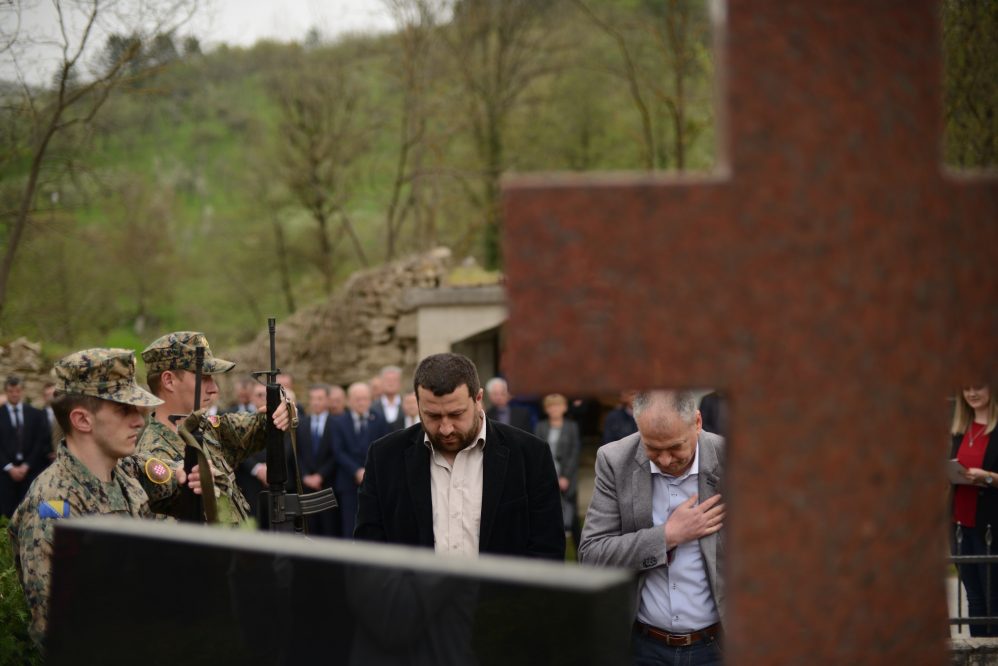It all went well, better than we could have expected. Veterans from once warring sides coming together to pay their respects to those executed in Trusina. It was particularly important that the organisers pointed out the presence of the veterans at the commemoration.
Exhausted from the hike to the cemetery in Trusina where a mass service was held. Full of impressions after everything that happened, full of emotions informed by the diverse experiences of the veterans. There was little opportunity to analyse where everyone personally stood and what their individual take was.

After the official programme, most of the veterans set off on their way back home, while a few who had longer to travel, some ten hours or so, stayed in Jablanica in order to set off the next morning. Since we had a good part of the afternoon to fill, we decided to make it worthwhile. The plan was to visit monuments from the more recent and the more distant past that were located in the vicinity.
The closest monument was in Jablanica itself, where the participants were staying. The Museum commemorating the Battle for the Wounded at Neretva in Jablanica.
At the start, the visit was quite ordinary. Photos were taken as reminders and as something to show others. At the entrance to the Museum we were met by a curator who politely answered all our questions. Of course, one of the first questions was about the bridge, which bridge is which… The curator patiently explained that the bridge that the Partisans blew up was an old railway bridge across the Neretva, built at the time of the Austro-Hungarian Monarchy. In 1943, the Germans repaired the bridge in order to establish a rail line. The bridge that the Germans had constructed in 1943 was blown up for the filming of the Battle of Neretva. That bridge still lies destroyed and submerged in the Neretva.
The curator then left us to our thoughts as we went around the Museum, working through new impressions about an event we had learnt about at school or seen on film.
We met up with the curator again at the end of our visit and he was interested to know what had brought us there. He was probably gathering feedback on interest for the Museum.
Through conversation it came out why we were in Jablanica. We explained: Veterans from once warring sides coming together to pay their respects to victims executed in Trusina.
The curator was incredulous: “Veterans from all the warring sides!?” When we confirmed that they were indeed from all the warring sides, he showed particular interest in one side of the conflict, asking: “What, they’re here too?” (Up to that point it had not seemed that important to us, so we hadn’t paid it much attention.)
After we told him they were here too, the curator’s reaction got us thinking about the importance of these visits and the presence of veterans from all warring sides at such events to pay their respects to those killed in the conflicts in the former SFRY.
The curator wanted to return the money we had paid for tickets to the museum, explaining that had he known who we were, he would never have charged us, and he said a few more measured sentences commending our participation at the event.
Of course, we said that he should consider what we paid for the tickets our humble contribution for the upkeep of the Museum. We parted full of impressions brought on by this Museum visit. We went on to visit a few more sites we had planned to see.
It was only once we returned to the motel and told others about what had happened that we truly reflected back on it.
We started thinking about the value of visits bringing together veterans from all the once warring sides, especially to sites of suffering on all the sides, to commemorate the deaths of the innocent, the helpless…
I will not impose my own conclusions from this experience. Let everyone meet with their own thoughts.
Ljudevit Kolar Kole